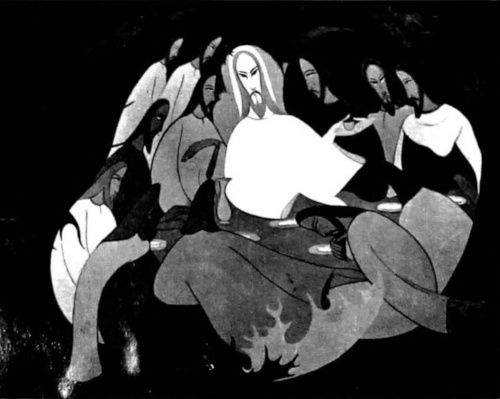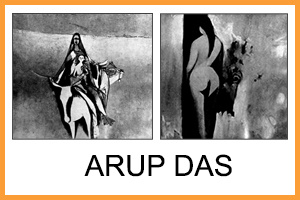
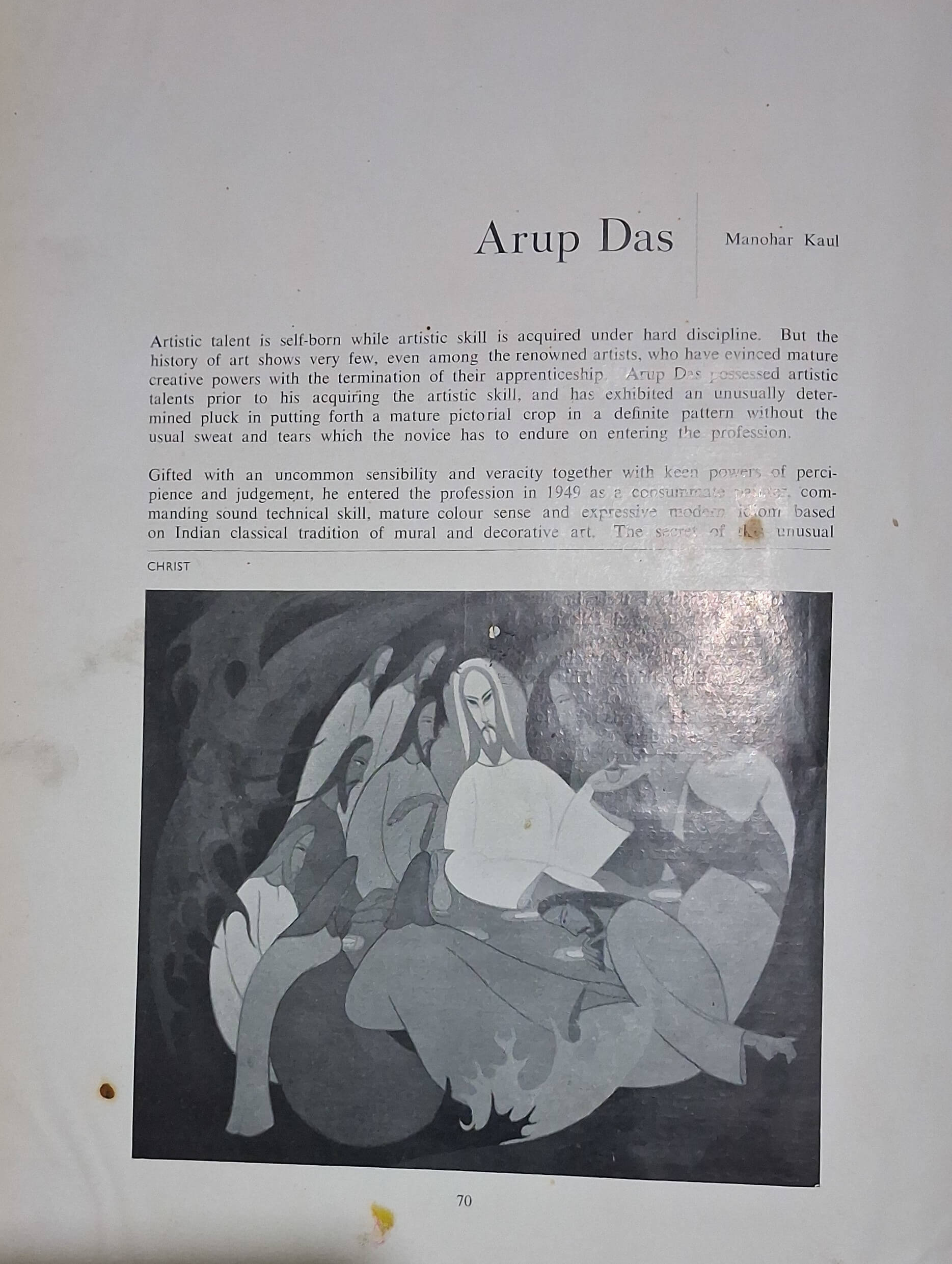
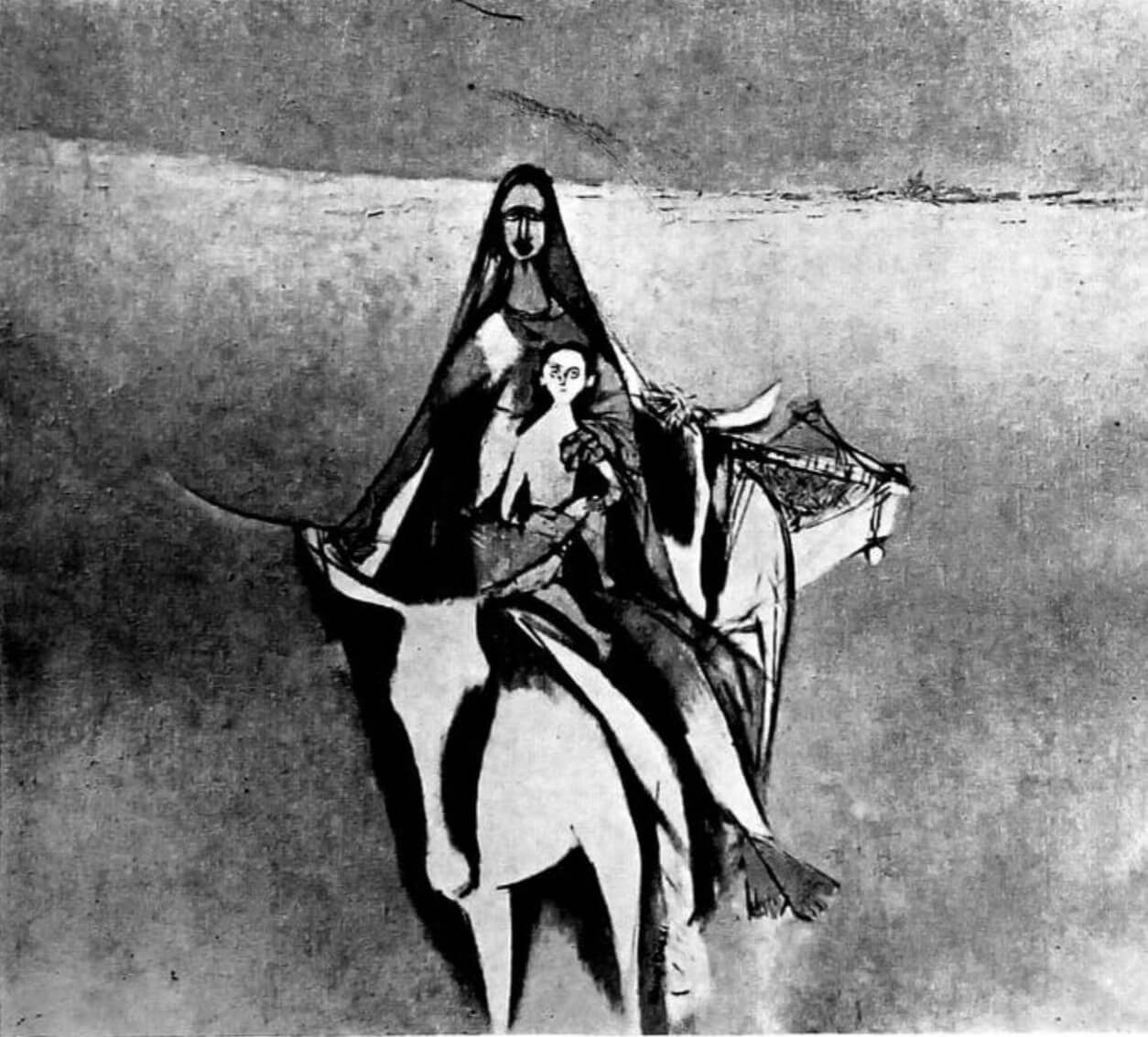
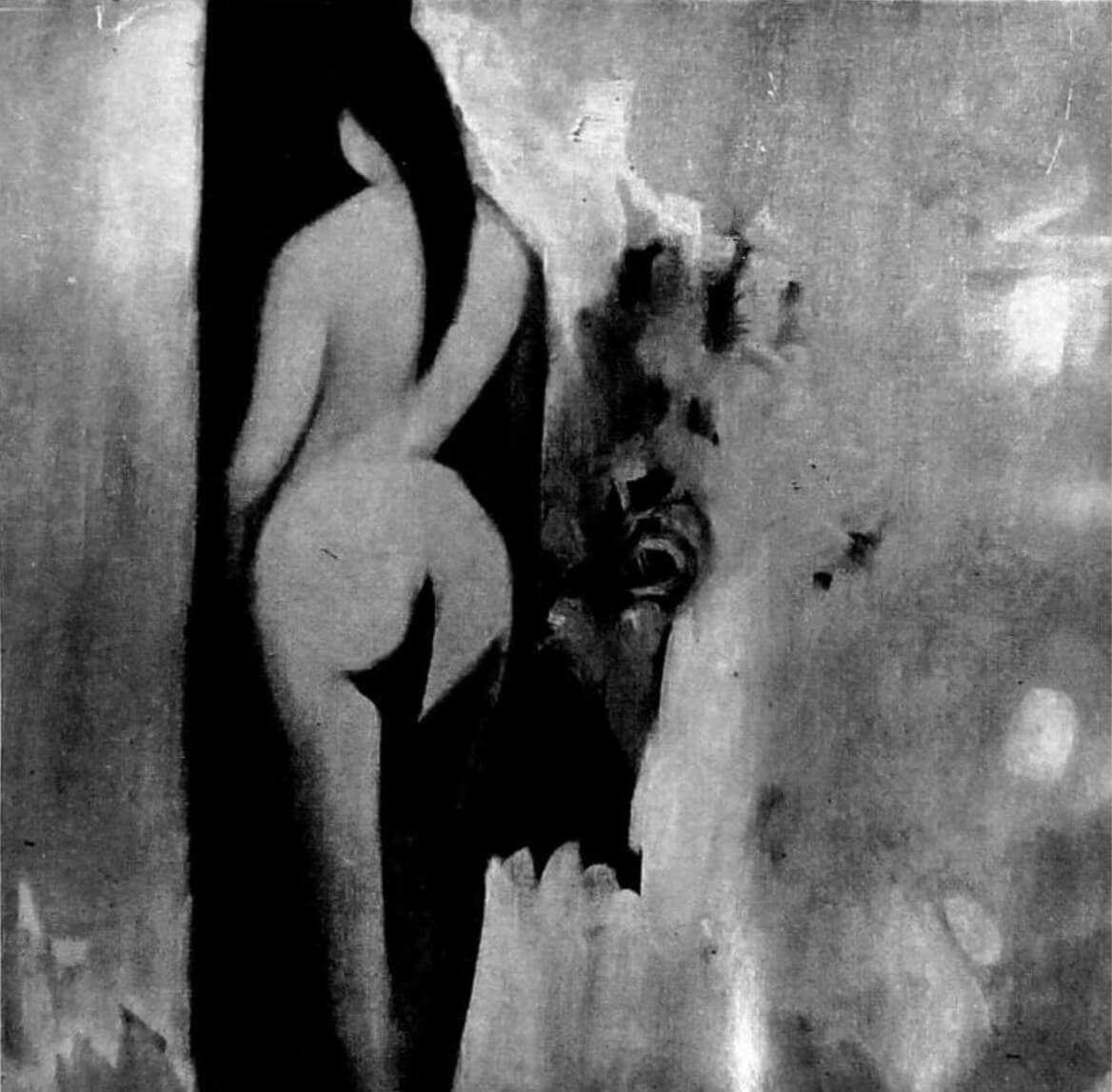
Arup Das
By MANOHAR KAUL
Roopa-Lekha Magazine Vol Xxxiii No.1&2
Artistic talent is self-born while artistic skill is acquired under hard discipline. But the history of art shows very few, even among the renowned artists. who have evinced mature creative powers with the termination of their apprenticeship. Arup Das possessed artistic talents prior to his acquiring the artistic skill, and has exhibited an unusually deter- mined pluck in putting forth a mature pictorial crop in a definite pattern without the usual sweat and tears which the novice has to endure on entering the profession.
Gifted with an uncommon sensibility and veracity together with keen powers of perci- pience and judgement. he entered the profession in 1949 as a consummate painter. com- manding sound technical skill. mature colour sense and expressive modern idiom based on Indian classical tradition of mural and decorative art. The secret of this unusual development can be gauged in tracing the various influences he has had from his child- hood onwards.
Born in 1927 in Chinsurah. Arup Das grew up and had his schooling right up to the end of his teenage in this picturesque town. Beauty in any shape or form seemed to have early attracted him and this precocious aesthetic sense of the joy of beauty was the first indication of the natural artistic talent and manifested itself in him in subsequent life. The natural beauty of the village woman, moving about round of their domestic duties in unsophisticated poses and dresses, was a lasting powerful impression that has been providing him with the prototype of the female folk depicted in his com- positions or drawn in his sketches. But the most potent influence that had left indelible mark on the childish mind for attraction towards beauty was his own mother who was a skilled artisan in her own right. But it was the Government Art School of Calcutta which he joined in 1945 that finally moulded his inherent aesthetic talent into definite artistic channel and creative activity by giving himself thorough practice in many styles, old and new.
The chance study of charming eastern pictorial galaxy in the private studio of Mrs. Shrimati Tagore opened before the artist a new horizon wherein he found the possibility of not only reproducing in an improved form what was aesthetically most attractive in nature and life. but also enable his own vision of the forms of beauty from even the sordid milieu of his native Bengal village. Rustic scenes like bamboo groves, clusters of palm trees and village huts, surrounding greenery. simple rural folk in their day-to-day occu- pations and paddy cultivation. unsophisticated women in their rural round of work and gossip provided him with endless themes and motifs. whereof he created quite a good harvest of beautifully striking pictures in tempera or soothing water colours.
In these initial pictorial attempts Arup Das has amply demonstrated his matured powers and creative skill in putting forth mural-cum-decorative patterns after the traditional modes of India and Japan. There are the usual soft colour tones, calm atmosphere, natural freshness, lyrical resonance, dynamic motive and dramatic situations and other qualities that are, in one way or other. met with in the classical decorative art of the East. As a matter of course, he did not follow any set pattern, but what he evolved as his first mode of aesthetic idiom has close affinity to this or that traditional schools.
Though he achieved rewarding success in these first attempts, he soon realised the pitfall of being trite. To avoid dull uniformity and bring forth diverting variety with- out diminishing the decorative charm, he shared his creative grit in introducing inno- vation after innovation by engrafting fresh elements culled from modern stylized modes and the folkish mannerisms into the language of his presentations without detracting a jot from its Indian character. outlook. background or thematic content.
In this way he soon extended its range from the soft, soothing, delicate and sentimentally decorative classical pattern to the poetically stylized decorative folk style in bold colours. sweeping curves and lovely realistic designs after the manner of Jamini Roy. Sheila Auden and others. The folk elements and other stylized mannerisms through his skilled manipulation rather enhanced the tone of beauty and aesthetic charm in his composi- tions and made them doubly alluring and winsome.
From 1949 onwards Arup Das remained prolific and versatile in his output of de- corative art in his varied styles. He has achieved wonderful results mostly in such compositions in which the texture and design have been worked up with carefully calcu- lated details. Such bold and simplified essays as "Music in the Grove", "Romance in Nature". "Welcoming Palm" and the like are attractive as well as evocative of a sensation of joy and love. Others like "Music of the Golden Harvest" and "Christ" in panels of several paintings on different facets of the same subject-are eminently decorative murals of impressive and monumental nature. The first is a sympathetic yet charming depiction of rural life in six panels in the folk styles giving a complete picture of the process of rice cultivation. The other two are among many others on religious topics. depicting in the Ajanta manner in several murals some incidents from the life of Christ and Ramakrishna Paramahamsa in various stages of spiritual development.
Being sure of his own aesthetic powers and skill, he was bold enough. almost from the start of his pictorial career. to participate in every major or minor All India competi- tive exhibitions in India and abroad and invariably won the coveted laurels every time for the best painting in Indian style. To mention a few, he won three prizes for his three exhibits in the All India Handloom Design Competition in 1950, and his "Village Life" found an honoured place in the National Gallery of Modern Art. New Delhi in 1953. "Women on the River Bank" won for him the President of India plaque in 1961 and "Beneath the Palm tree" the Gold Medal from Hyderabad in 1958. He also won a prize from the Lalit Kala Akademi for the best mural painting "Christ" in 1955. Many of his paintings also got acquired for State and private galleries in India and in some foreign countries. The several one-man shows of his works held in Delhi and Calcutta from 1955 onwards evoked appreciative response from the public and the press.
Arup Das in his latest works, has simply demonstrated his creative ingenuity and competence in putting forth diverse designs, forms and approaches in many media and styles, All along he has been busy in enriching and enlivening his own evolved pattern with embellishing conceits, nuances picked up from the various modern western modes. none of which he adopts wholesale. Traces of impressionism, cubism. abstractionism. expressionism and even surrealism are quite easily discernible in most of his works done in the last six or seven years. But the distinguishing character or feature of each of them is almost lost sight of in the glare of his pre-eminently decorative Indian approach and background.
He has adopted the multi-dimensional spatial perspective after the cubist formula. but has struck a fine balance where mass was required to be put up, though it has otherwise remained inconsequential.
In more decorative compositions as also in less decorative ones. Arup Das has made full use of abstract symbolism of the figurative type. In weaving the texture of his designs and compositions, whether symbolic or otherwise. the artist has shown genuine prescience towards effecting simplicity and economy. There is a rhythmic balance in the disposition of mass. content and space as also of light and shade. He chisels and polishes like an accomplished craftsman. selects and adjusts with discriminative acumen and builds step by step with exquisite details.
Arup Das is a cool. collected and serious painter who is never in a hurry but pursues his art like a holy pilgrim treading upwards slowly and steadily with faith and love to his predetermined end. This personal trait he admirably portraits symbolically in his "Homeward Bound". His stylized human or animal figures are not automatons. but sensitive individuals pregnant with vital emotions or dramatic action. He paints his landscapes with cactus. rocks or houses in dreamy sheen or misty film of attractive yellow. often with a trail of symbolic human figures. Such are his "Silent Noon" or "Whispering in the Sun" or "Landscape with Cactus". His "Eternal Sufferer" represents the annoying theme of suffering humanity. Most of his decorative pieces are of surpassing beauty in which the stylized exaggeration or misty distortions has enhanced the magical charm. Such, for instance, is his "Quadruped Family".
The nudes are drawn with partially stylized contours and dreamy indefiniteness and partially soft and sophisticated refinement. On the whole, they present the lyrical charm of deluding humanity that more adorns than ravishes. In "Speed" the two rushing horses symbolise the juxtaposition of light and shade. And so his other works, so far displayed or not, proclaim him a serious artist wedded to beauty and truth where symbolic representation is marked not only by originality and significance but also by decorative charm.
